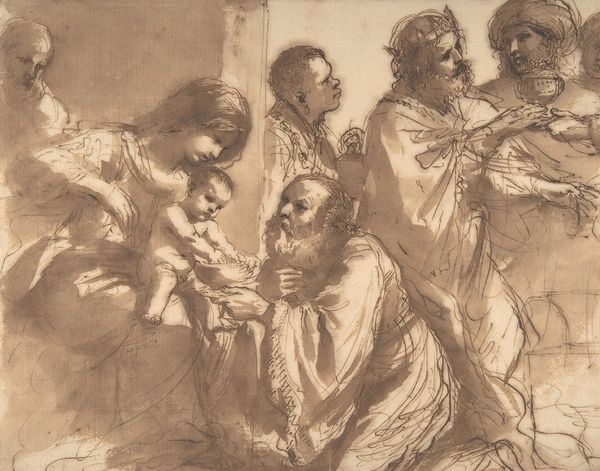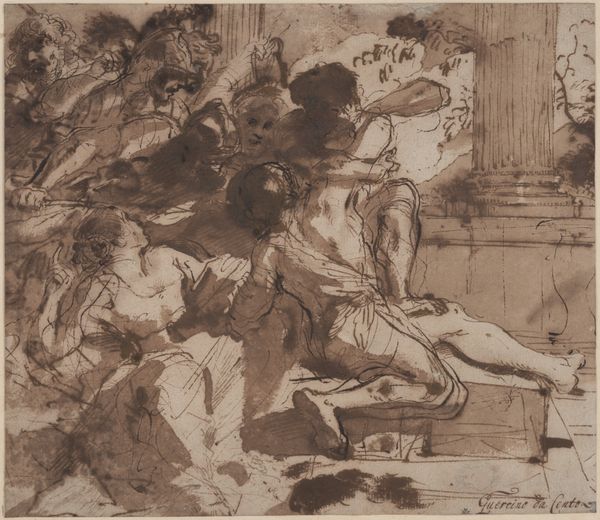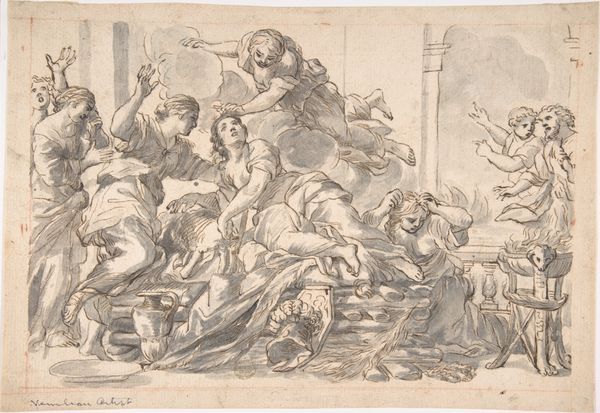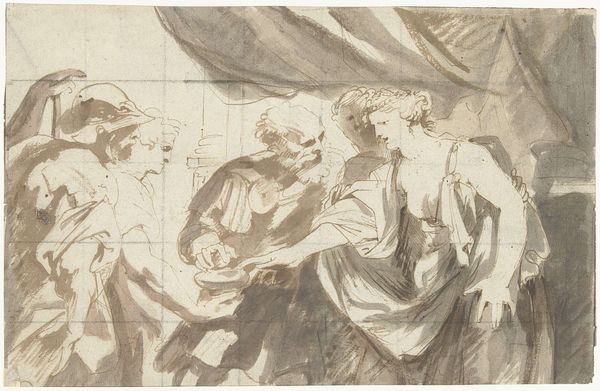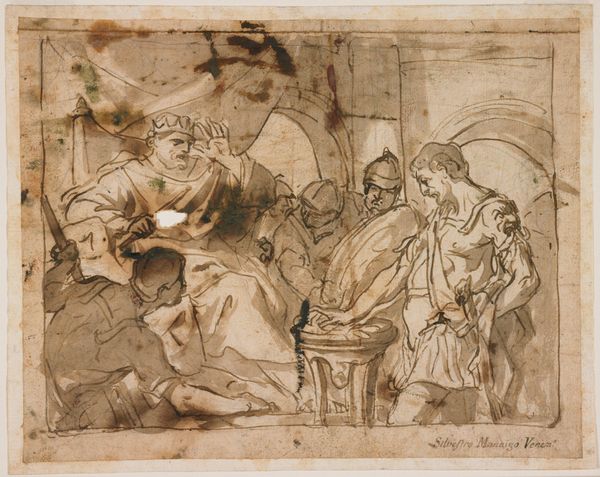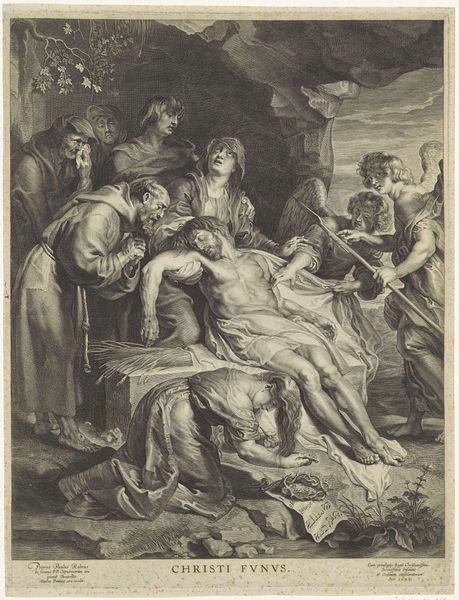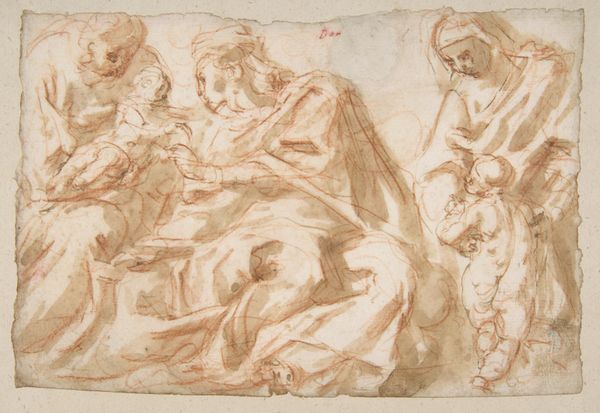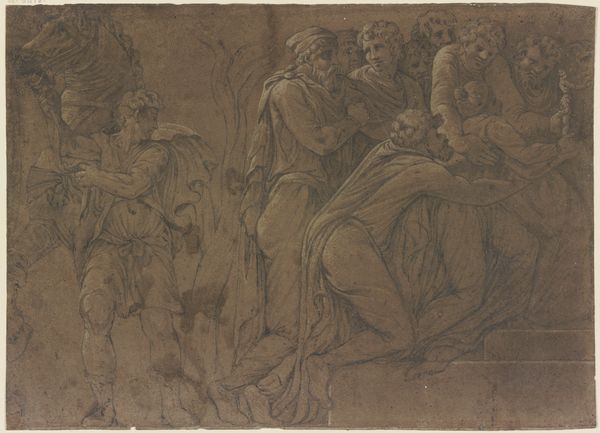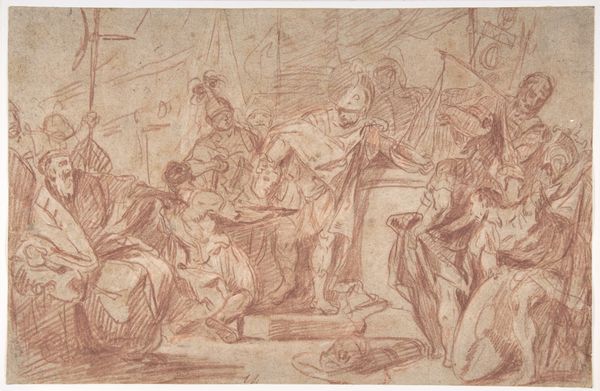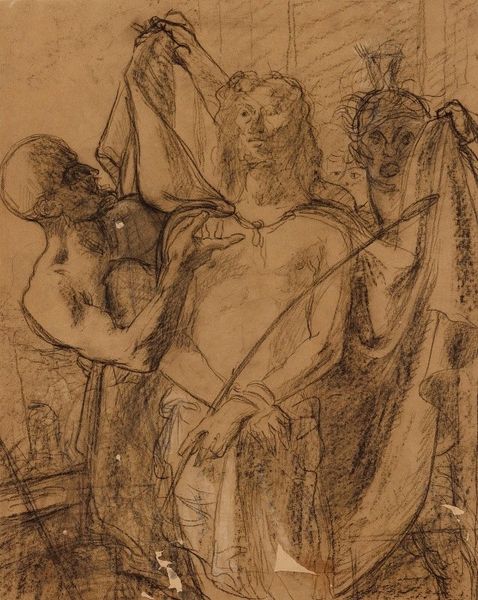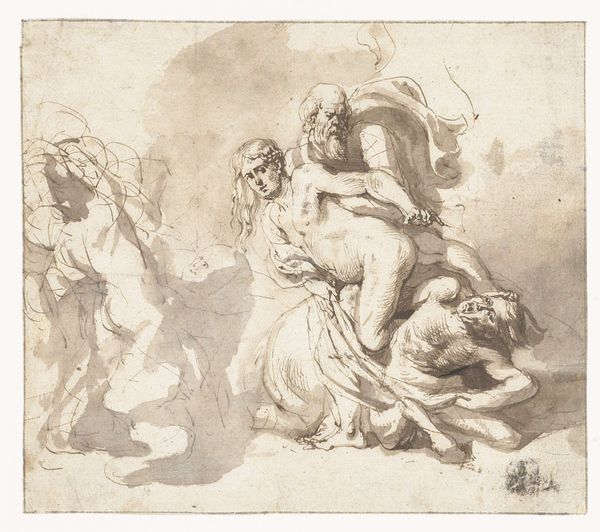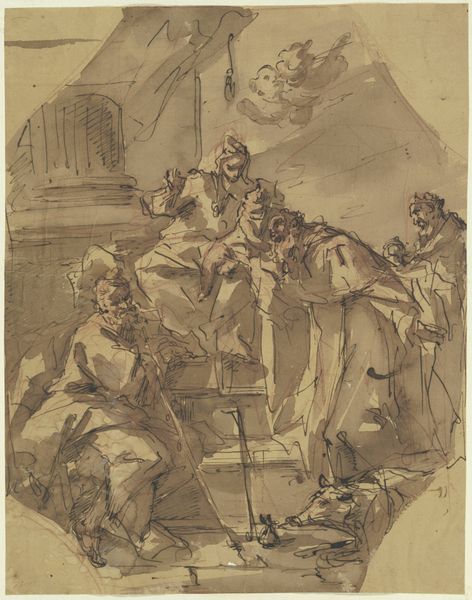
drawing, ink, charcoal
#
drawing
#
narrative-art
#
baroque
#
charcoal drawing
#
figuration
#
oil painting
#
ink
#
charcoal
#
history-painting
#
watercolor
Copyright: Public Domain: Artvee
Curator: Welcome. Here we see "The Raising of Lazarus," a drawing rendered circa 1619 by Guercino, an Italian Baroque artist. The medium appears to be a combination of ink and charcoal. Editor: Whoa, it's got this intense, dreamy vibe, right? Like a scene playing out in your head just before waking up. The way the light falls is wild – a beacon slicing through the muted tones. Curator: Precisely! The strategic use of light and shadow, or "chiaroscuro," is characteristic of the Baroque style, heightening the drama and emotional impact. Consider, too, that narrative painting experienced significant shifts through art market development. This would not have been destined for display in a church. Editor: Okay, but beyond art history class, check out Lazarus himself! Dude looks totally bewildered, like he just woke up from the ultimate power nap and can’t remember where he parked his chariot. Talk about an awakening. Curator: The narrative, of course, depicts the moment when Jesus raises Lazarus from the dead, a pivotal scene of miraculous intervention within the New Testament. It's essential to remember that images like this circulated in an era of Counter-Reformation and heightened spiritual fervour. Editor: True, and the pointing finger gives me the shivers! It cuts through the whole scene. It feels electric, y’know? That divine spark moment frozen in sepia tones. I’d bet someone was deeply moved after gazing into that scene. I wonder what this moment would like like in virtual reality? Curator: Indeed, Guercino captures a transformative point of history and theology, reflective of how artworks engaged audiences both intellectually and emotionally. Consider the powerful influence and impact the Church had on social values and imagery at this time. Editor: This ink drawing doesn't shout at you. It sort of whispers of that transformation you mention – the journey from dark to light, slumber to shock, and all captured so gently with the delicate gradations of charcoal. I imagine seeing it daily could make one reflect a little on existence! Curator: That interplay of human emotion with larger ideological constructs remains fascinating when studying the history of visual art.
Comments
No comments
Be the first to comment and join the conversation on the ultimate creative platform.
